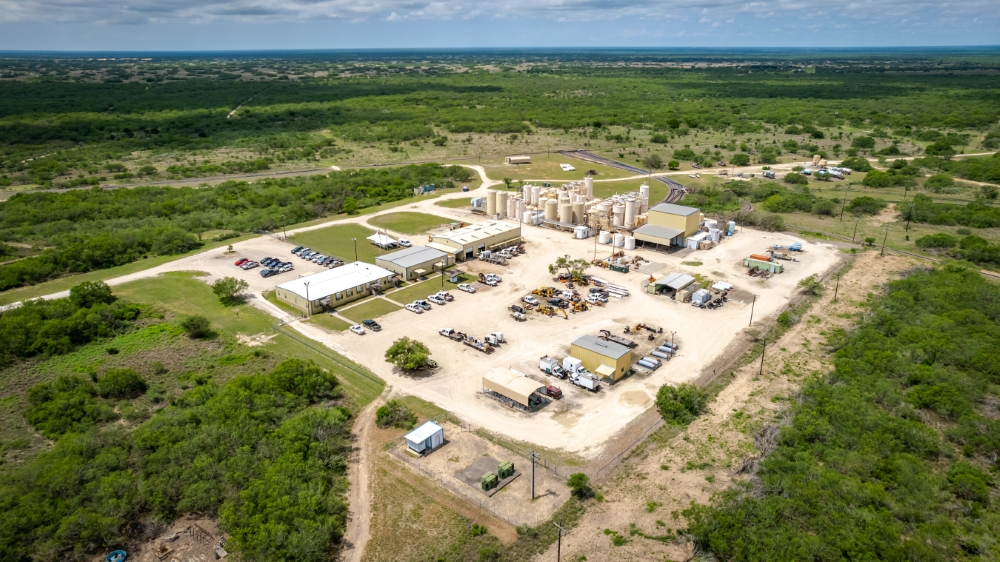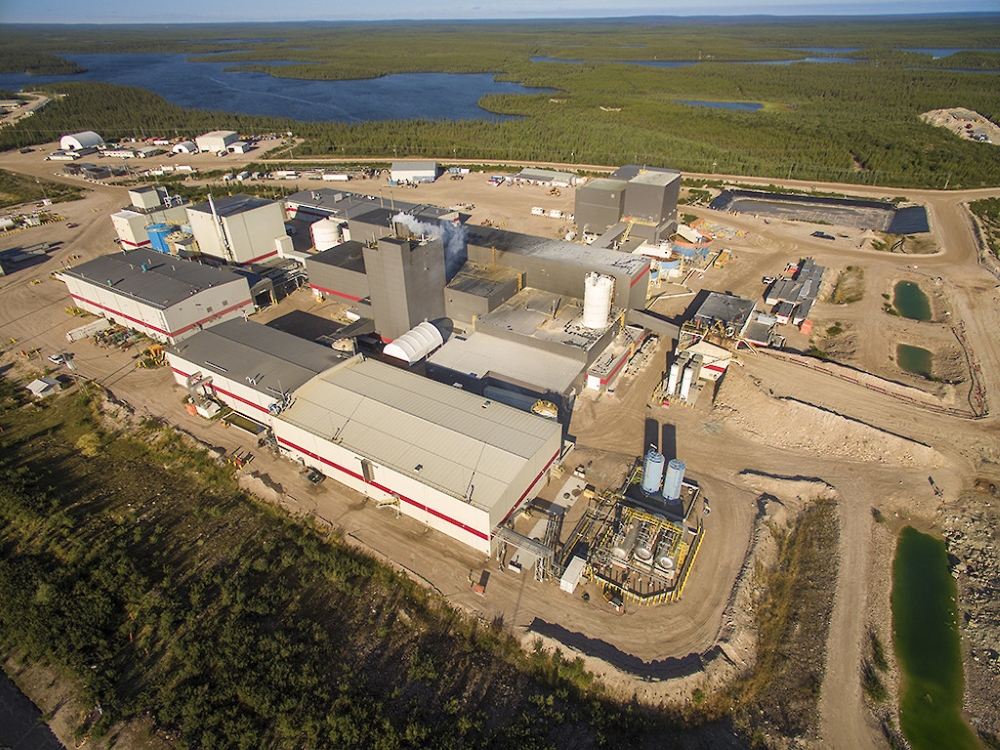

enCore Energy continues to expand uranium production at its Alta Mesa site in South Texas.
Photo courtesy of enCore Energy
“No form of nuclear fission power — of any kind — is possible without relying on uranium.”
So state the France-based Nuclear Energy Agency (NEA) and the International Atomic Energy Agency (IAEA). So it figures where to find and process the stuff might be important.
The organizations made their statement in introducing earlier this month the 30th edition of “Uranium 2024: Resources, Production and Demand,” aka the “Red Book,” marking 60 years as the a recognized global reference on uranium. In addition to reports from 62 countries, the 608-page publication features data from 2021 and 2022 on uranium resources, exploration, production and inventories.
Globally identified recoverable uranium resources amount to nearly 8 million metric tons, the report states. “Additions to the uranium resource base could however arise from undiscovered or unconventional sources,” reads the report, “driven by the sharp rise in uranium spot prices since mid-2021 and the commitment first announced during COP28 and now signed by 31 countries to triple their nuclear energy capacity by 2050.”
Exploration and mine development have increased “dramatically,” the Red Book says, up to $800 million in 2022 and likely to $840 million in 2023 when all is tallied. That still lags annual levels of $1.5 billion to $2.1 billion between 2008 and 2014 before low prices slowed activity from 2015 to 2020 other than the previously committed Husab mine project in Namibia.
The establishment of new production centers “is anticipated to face significant lead times due to today’s risk-averse investment climate and complex and lengthy regulatory processes in many uranium mining jurisdictions,” the report states. “Geopolitical challenges and technical difficulties in developing new mines and milling facilities may further compound the situation. As a result, efforts must begin immediately to ensure adequate uranium supplies are available in the medium term.”
Where is the activity now? “Total exploration and mine development expenditures for 2021, 2022 and 2023 (preliminary estimates) amongst the 27 reporting countries [seven of which reported only for 2021 and 2022] amounted to $2.1 billion,” the report says, “with Canada, China, Russia, India, Namibia and Uzbekistan leading the way. Expenditures in these six countries together accounted for 90% of the total, with Canada alone accounting for 34%.”

Orano Canada and Denison Mines restarted uranium mining operations at McClean Lake in northern Saskatchewan’s Athabasca Basin in early 2024 after the site had sat dormant since 2008.
Photo courtesy of Denison
In 2022, 17 countries produced uranium, with the global total amounting to 49,490 tU (metric tons of elemental uranium), the report states. “Kazakhstan remained by far the world’s largest producer, at 43% of global production, even as production continued at scaled-back levels. Kazakhstan’s production alone in 2022 amounted to more than the combined production from Canada, Namibia, Australia and Uzbekistan, respectively the second, third, fourth and fifth largest producers of uranium that year. Just six countries accounted for 90% of the world’s uranium production in 2022, and nine countries accounted for 99%, with Russia, Niger, China, and India the sixth, seventh, eighth and ninth largest producers, respectively.”
Enter “uranium” as a keyword into Site Selection’s Conway Projects Database and around a dozen new facility investment projects pop up over the past two years. Sometimes the connection is faint, as news of Hyundai’s new vehicle plant in Kazakhstan occurred against the backdrop of new agreements signed in June 2024 between South Korea and Kazakhstan that include permission for South Korean companies to participate in exploration activities in Kazakhstan for uranium, lithium and other rare earth minerals.

Wheeler River is the largest undeveloped uranium project in the eastern portion of the Athabasca Basin region in northern Saskatchewan, Canada. The project from Denison Mining hosts two high-grade uranium deposits: Phoenix and Gryphon.
Photo courtesy of Denison
Some projects have a more direct relationship to the substance. In November, Wilmington, North Carolina-based Global Laser Enrichment LLC (GLE) finalized a land transfer with the Commonwealth of Kentucky for a proposed uranium enrichment project that would create up to 300 full-time jobs for Kentuckians. GLE acquired 665 acres previously owned by the Kentucky Department of Fish and Wildlife Resources through an agreement with the commonwealth, Kentucky Fish and Wildlife and the Paducah-McCracken County Industrial Development Authority. GLE has a contract with the U.S. Department of Energy (DOE) to process uranium stored from past activities at the Paducah Gaseous Diffusion Plant, which closed in 2013 after decades in operation. The greenfield acreage GLE acquired is next to the plant.
“In exchange for 665 acres of the West Kentucky Wildlife Management Area (WMA), Kentucky Fish and Wildlife will accept ownership of 1,043 acres in Fulton County acquired by the Paducah-McCracken County Industrial Development Authority and funded by GLE,” a Kentucky Fish and Wildlife release explained. Adjacent to the Mississippi River, the Choate Tract, as it will be called, was previously used for agriculture. It will be owned and managed by Kentucky Fish and Wildlife and was expected to open to statewide regulations for hunting and fishing in spring 2025.
Other projects include French concern Orano Group’s massive investment in Oak Ridge, Tennessee (Site Selection interviewed Orano leaders about the project) as well as Orano Canada’s project with Denison Mines to restart mining operations at McClean Lake in northern Saskatchewan’s Athabasca Basin in early 2024. Separately, last month, Denison announced progress toward a separate new uranium mine, the Phoenix In-Situ Project, at Wheeler River also in that region. The company hopes to gain regulatory approvals to begin construction in early 2026. Denison is active in 34 different projects in the Athabasca Basin and has an indirect stake in 11 more. — Adam Bruns

“We are very excited to expand into the Athabasca Basin with the proposed acquisition of the Corvo Project,” said Mandeep Parmar, Interim CEO of Vancouver-based Vital Battery Metals, last week on signing a non-binding letter of intent with Standard Uranium Ltd. “The Athabasca Basin is renowned for world-class uranium deposits, aligning with the company’s goal of acquiring high-potential projects in key jurisdictions.”
Map courtesy of Vital Battery Metals